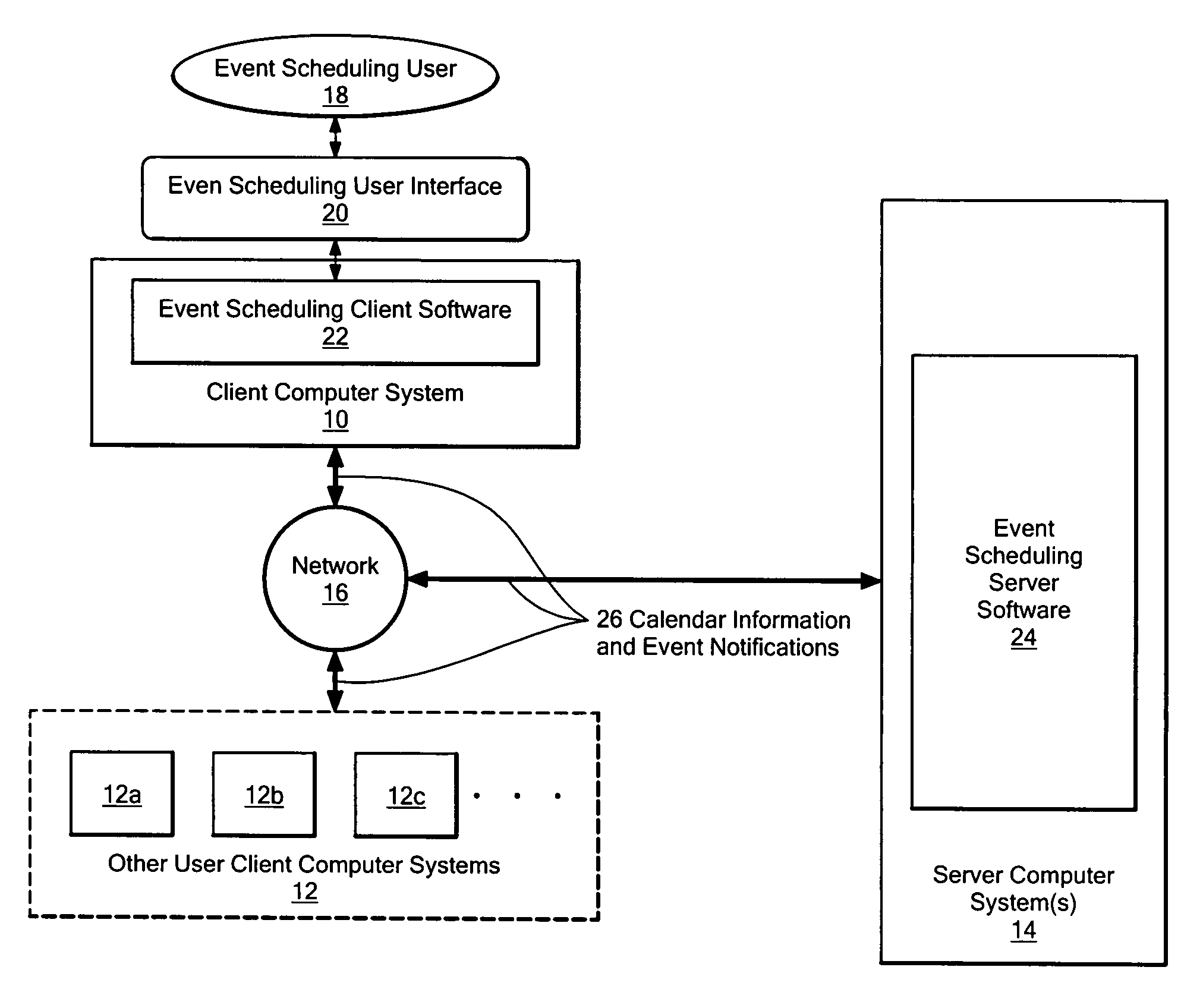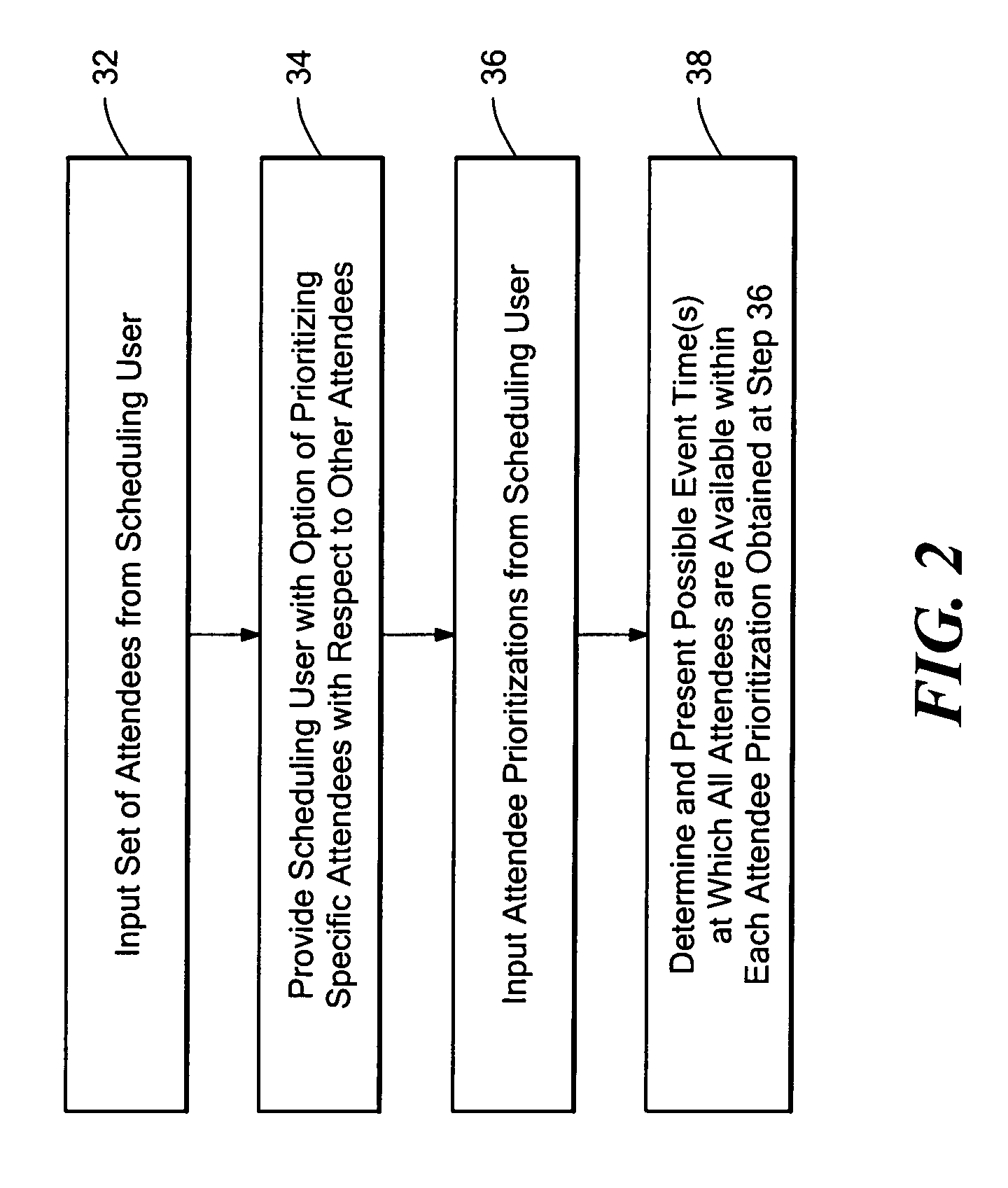Method and system for prioritizing meeting attendees
a technology for meeting attendees and prioritization, applied in the field of electronic calendaring and scheduling software, can solve the problems of difficulty in finding an event time that is suitable for all attendees, existing systems have not yet sufficiently explored the significance, and the scheduling challenge may be compounded, so as to facilitate the prioritization of prospective attendees
- Summary
- Abstract
- Description
- Claims
- Application Information
AI Technical Summary
Benefits of technology
Problems solved by technology
Method used
Image
Examples
Embodiment Construction
[0017] As shown in FIG. 1, in an embodiment of the disclosed system, a number of software components execute on various computer systems, shown for purposes of illustration in FIG. 1 including a client computer system 10 and other client computer systems 12, shown including a number of client computer systems 12a, 12b, 12c, etc., as well as one or more server computer systems 14. The client computer systems 10 and 12, and server computer system(s) 14 may, for example, each include at least one processor, program storage, such as memory, for storing program code executable on the processor, and one or more input / output devices and / or interfaces, such as data communication and / or peripheral devices and / or interfaces. The client computer systems 10 and 12 and server computer system(s) 14 are communicably connected by a data communication network 16, such as a Local Area Network (LAN), the Internet, or the like, which may also be connected to a number of other client and / or server compu...
PUM
 Login to View More
Login to View More Abstract
Description
Claims
Application Information
 Login to View More
Login to View More - R&D
- Intellectual Property
- Life Sciences
- Materials
- Tech Scout
- Unparalleled Data Quality
- Higher Quality Content
- 60% Fewer Hallucinations
Browse by: Latest US Patents, China's latest patents, Technical Efficacy Thesaurus, Application Domain, Technology Topic, Popular Technical Reports.
© 2025 PatSnap. All rights reserved.Legal|Privacy policy|Modern Slavery Act Transparency Statement|Sitemap|About US| Contact US: help@patsnap.com



